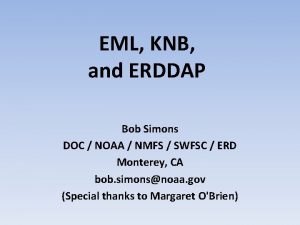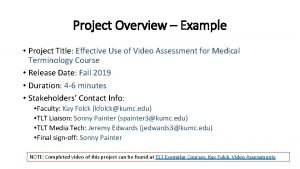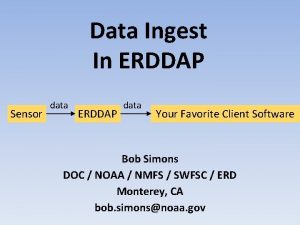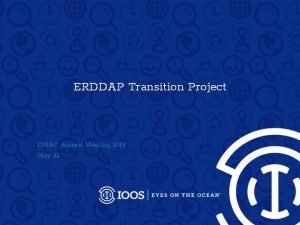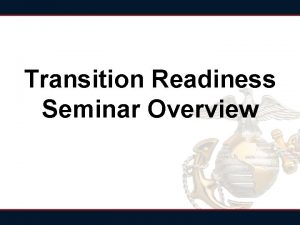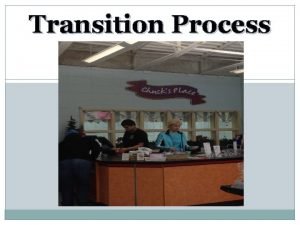ERDDAP Transition Project ERDDAP Project Overview Goals Improve






- Slides: 6

ERDDAP Transition Project

ERDDAP Project Overview Goals: ● Improve accessibility and usability of IOOS’ in situ datasets - remove SOS usability barrier ● Ensure consistent dataset structure across RA ERDDAP servers; recommend update frequencies and workflows to accommodate use cases (GTS) ● Provide tools to confirm compliance with guidelines ● Collaborate with RAs on designing a workable system ● Acknowledge ERDDAP migration is already happening and ensure consistency across DMAC enterprise ● Prove that ERDDAP can meet our needs for in situ data serving 2

ERDDAP Timeline & Implementation Plan 1. Finalize Metadata Profile 1. 2 & initial Gold Standard examples (June) 2. Implement Compliance Checker extension (July) 3. RAs deploy ERDDAP service, publish a single compliant dataset (Items 4 & 5 will drive these - harvesting testing/implementation process) 4. Implement Sensor Map harvest system for ERDDAP test-case deployments (September) 5. NDBC to test GTS harvest from Pac. IOOS, AOOS (Sept) 6. Retire SOS requirement (By 2020 DMAC meeting) We will schedule a follow up DMAC webinar to touch base on progress ~ 4 months following DMAC meeting 3

Recap: DMAC Tech Webinar Slides from March Webinar: LINK Recap: ● ERDDAP already widely used at the regional level ○ Direct data access ○ Serve data for websites, jupyter notebooks ○ Source for third-party data harvest ● Variety of dataset storage approaches ○ DB/postgres, NC files, THREDDS, REST API ● Strengths ○ Simplicity, handles wide range of data types, can handle large datasets, various output formats ● Challenges: Scaling the process ○ Automation for adding/updating datasets, transitioning from legacy system/data, updating QARTOD flags 4

IOOS Metadata Profile v 1. 2 View profile in full: LINK ● Global changes: ○ Add info_url (required) ○ Clarify use of platform variable ● Attribution: ○ Make creator_institution, creator_url, and publisher_url required ○ Add creator_type and publisher_type (person, institution, group, or position) to match ACDD, indicating creator_name and publisher_name meanings (default is "person"). ○ Add contributor_url and contributor_email (both recommended) ○ Make institution recommended (previously was required) ○ Clarify vocabulary for contributor_role ○ Clarify use of contributor_name and contributor_role for multiple contributors Feedback: Consider unique identifier for affiliate to ease data attribution. Future work? 5

ERDDAP Gold Standard Example Server live at: https: //standards. sensors. ioos. us/erddap/index. html Full configuration: https: //github. com/ioos/erddap-gold-standard Documentation: https: //ioos. github. io/ioos-metadata/gold-standard-examples. html ● Follows the example of NCEI Net. CDF templates ○ Configuration and sample datasets available on Git. Hub, so others can use it as a template ○ Populated with example datasets and documentation for various scenarios ○ Collaborative effort! All the examples come from actual RA datasets 6



